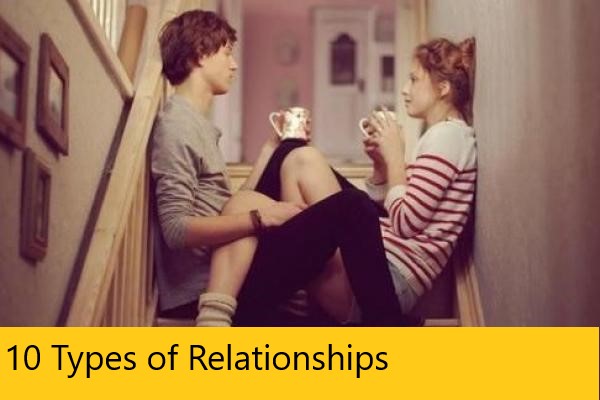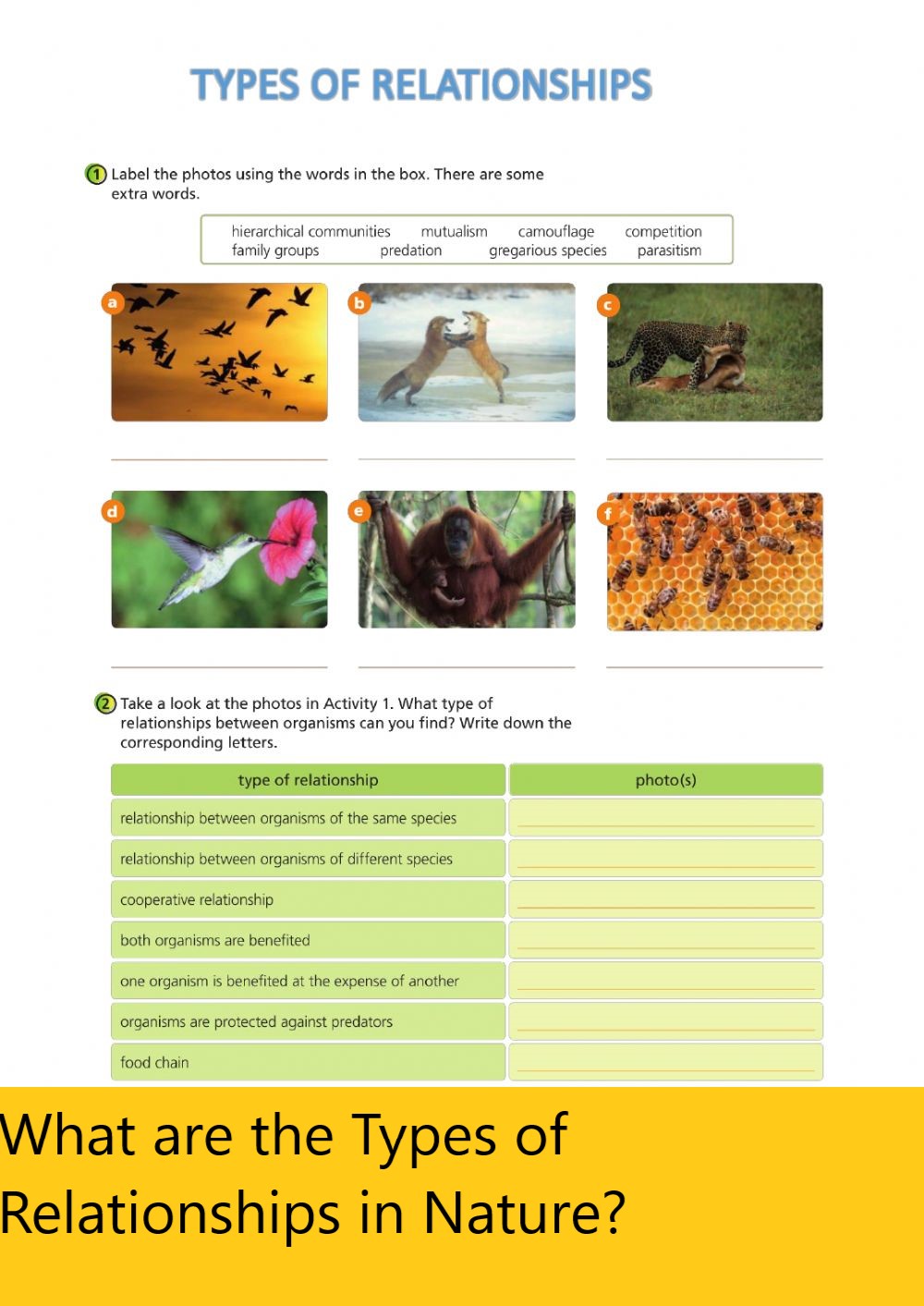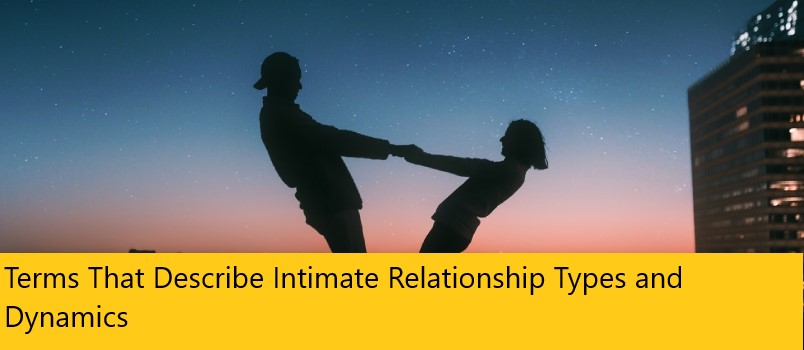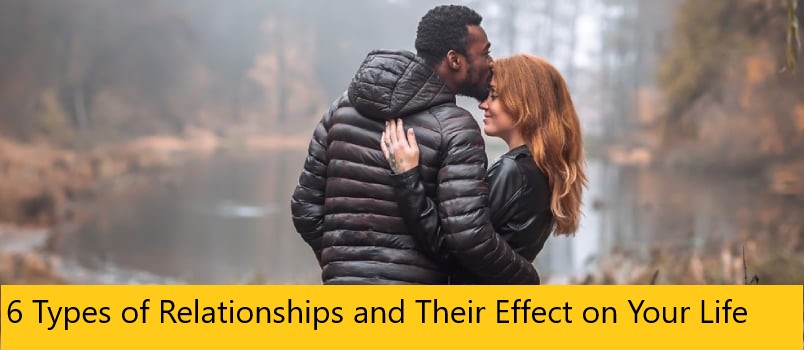10 Types of Relationships – Relationships come in so many different forms. What kind of relationship do you have? The type of relationship that you have can depend on your personality as well as the dynamic that you have with your significant other.
It is always important to discuss what kind of relationship you want with your significant other. Communication and honesty are essential.
There is such a wide variety of relationships that you and your significant other can choose from. Think about what you both want and need from each other.
Do you need your girlfriend or boyfriend to be with you and only you? Or do you want to date other people as well?
Would you like a relationship where you spend almost all of your free time together or do you want a relationship where you get to keep your independence?
Remember that you and your significant other are the ones who get to define your relationship. You have to work together to find the relationship that suits both of you.
If you are unhappy with your relationship or find yourself thinking that you might want something different than what you have now, then you have the ability to have the kind of relationship that you want for yourself.
Read about out the relationships below to see which one fits yours or to find out what kind of relationship is the most ideal for you.
TYPES OF RELATIONSHIPS
1. MONOGAMOUS
A monogamous relationship is what we tend to view as the traditional relationship. It is a relationship in which two people have decided to be exclusive and are only with each other.
When you decide to be in a monogamous relationship, you are committing yourself to that one special person in your life. This man or woman will be your one and only love.
While a monogamous relationship sounds like an ideal situation, it is not without its challenges. You have to be patient and find ways to keep the spark going.
Monogamy is not for everyone and some people do not do well in this kind of relationship. If you feel like you cannot have just one partner, then monogamy might not work for you.
Sometimes people get bored in their relationships or they wonder what they might be missing out on. If you are in a monogamous relationship, it is important that you do not let your eyes start to wander.
Cheating can threaten a monogamous relationship. In many cases, infidelity can even end the relationship that you have with your significant other.
You definitely do not want to break the trust in your monogamous relationship. Remember that it important to have open and honest communication with your partner.
There are times when people will try to test the boundaries of their monogamous relationship. Someone might do this by flirting with other people. Even if nothing really happens, flirting with someone outside of your monogamous relationship is still wrong.
In a monogamous relationship, there can be something comforting about the thought that you have someone who is completely devoted to you. Romantically speaking, your partner’s attention will be completely on you.
2. OPEN RELATIONSHIP
An open relationship means that the relationship is not limited to just the two people. The people who are in an open relationship are open to dating other people as well.
This is the opposite of a monogamous relationship. Like in any relationship, there should be trust and communication in a healthy open relationship.
An open relationship should not necessarily be seen as a free for all. It does not mean that you can just do whatever you want.
Even though it is an open relationship, you cannot neglect your partner. You should still set rules and boundaries and there are many different elements to think about.
You might decide that you are okay with your partner being emotionally involved with other people. Or you might feel like you are okay with your partner being intimate with others as long as they do not develop feelings.
Are you okay with seeing people that you know or should the other people involved be strangers? That is for you and your partner to decide.
Some people who are in an open relationship might talk about the other people that they are seeing. Others may feel uncomfortable doing so and will prefer to know as little as possible.
In an open relationship, you will also want to establish how much time you can spend on the other people you see. You might be okay with going on dates or you might prefer that these encounters are just hookups.
You will also want to establish what is and is not okay in the bedroom. There might be certain acts that you just do not feel okay about. If that is the case, then you should say so to your partner and ideally, they will respect your wishes.
Some people do not want their partner to kiss the other people that they are seeing as they feel like kissing is too romantic and intimate.
If you are in an open relationship, then you should always remember to be safe. Remember to check in with your significant other on a regular basis and to make sure that you are respecting each other’s wishes as well.
3. POLYAMOROUS
In a polyamorous relationship, the number of people is more than two. Other people are welcomed into the relationship and it is not considered cheating because everyone is in a relationship together.
This is a little different than an open relationship because all of the people are involved with each other, while open relationships are kept more separate. In an open relationship, there is one main partner, while in a polyamorous relationship, there are several partners.
In a polyamorous arrangement, everyone’s lives are more intertwined and sometimes everyone will even live together under the same roof. You will have to make sure that you all get along.
This type of arrangement can make the relationship a little more complicated at times since there are more emotions, needs, and dynamics to take into consideration.
Remember to sit down with your partner to discuss your guidelines and rules. In any relationship, you have to be on the same page.
This can especially apply to a polyamorous arrangement. Usually, the two main people in a polyamorous relationship are called the dyad. Then there are the additional people you bring into the relationship. Sometimes, this addition will not work out.
If you want to be in a polyamorous relationship, then it is important that you choose another person that you both would enjoy. On the other hand, not everyone will be romantically involved in a polyamorous relationship.
Other times, this person will seamlessly become a part of your relationship. Try to spend equal time with your partners. It is important that everyone can get along well.
It is only natural to want to feel included, so make sure that you do not make anyone in this arrangement feel neglected or left out.
Jealousy is something that can happen all too easy in any relationship, let alone a polyamorous one. Make sure that you stay on top of how everyone is feeling.
A polyamorous relationship can get complicated because of all the different people and feelings involved. If you are in a polyamorous relationship then you should always be honest and talk about your feelings. Respect each other’s boundaries to make sure that nobody gets hurt in the process.
4. LONG-DISTANCE RELATIONSHIP
A long-distance relationship can really test the strongest of relationships. This is when two people are in a relationship but they live far away from each other.
Sometimes when two people live far apart, they decide to no longer be in a relationship. It can be hard work to be in a relationship where you cannot see your significant other on a regular basis.
Some people decide that they still want to be together regardless of distance, and that is what a long-distance relationship is. In a long-distance relationship, there will often be many phone calls and visits.
Read More : Salvabrani.com

Instead of hopping in your car to visit your significant other, you might have to hop on a plane. It can be frustrating but for the right people, a long-distance relationship is worth it.
Ideally, long-distance relationships are just temporary and there is a plan one day for the two people in the relationship to live together. This can be hard to plan as one person will have to decide to leave their job, family, or friends to live with their significant other.
To make a long-distance relationship work, communication is key. Even though it is important in any relationship, it really is essential here because you are not seeing each other on a regular basis.
Because you do not see each other all the time, you have to find ways to keep the relationship interesting. You can even be romantic and send each other things in the mail. Try writing each other letters the old-fashioned way.
Some people will think that you are crazy about being in a long-distance relationship. But if you really love each other, then it will be worth it.
5. DOMINANT AND SUBMISSIVE RELATIONSHIP
If someone is in a dominant and submissive relationship, then that means that they are either dominant or submissive in the bedroom. Some people even switch between the two roles of dominant and submissive.
50 Shades of Gray is an easy example of a story that has a dominant and submissive relationship. In a typical dominant and submissive relationship there is bondage and a variety of toys used in the bedroom.
Even though the idea of dominant and submissive applies heavily to the bedroom, a dominant and submissive aspect to a relationship can apply to all aspects of this couple’s life. The dominant person will take the reigns and be the leader while the submissive one will want to please them.
While this kind of relationship is considered wild by many, it still has its own set of boundaries. There are rules that should be followed and you should respect each other’s wishes in the process.
In this kind of relationship, you still have to make sure that you are being respectful and safe with each other.
6. CO-DEPENDENT RELATIONSHIP
A co-dependent relationship is one where the two people in it are always attached at the hip. They are rarely seen without each other and it feels like they do everything together.
It might even seem as if these people cannot function when they are apart. This is when a co-dependent relationship becomes unhealthy.
In a healthy relationship, you should be able to be apart from your significant other sometimes. You should not have to rely on them for everything.
Sometimes your significant other will need a night out with friends or they will be apart from you because of school or work. That is why it is important to not become overly dependent on them.
7. CASUAL RELATIONSHIP
A casual relationship is usually one where the relationship is relatively new. You and this other person have been seeing each other, but you have not necessarily defined the relationship.
You might not even be calling each other boyfriend and girlfriend yet. You may even be seeing other people or maybe you are not.
People who are in a casual relationship typically do not meet the other person’s family members. Sometimes they will not even meet the friends either.
Because people in casual relationships are not serious, they typically do not introduce each other to the important people in their lives. This makes sense because there is no commitment on either end.
In a casual relationship, people like to keep their options open in case another possible person interests them. If you know that you cannot handle this type of dynamic, then do not enter into a casual relationship.
You should feel comfortable asking for what you want and need in a relationship, whether that means settling down and being serious.
8. FRIENDS WITH BENEFITS
A friends with benefits situation is not exactly a relationship. It is a relationship in which two people agree to be intimate but with no strings attached.
In this situation, there should be no romantic feelings involved. You are not boyfriend and girlfriend and you are not exclusive. This is purely a casual, physical relationship.
It can be tricky to enter into a friends with benefits situation as you will be attempting the physical part of a relationship without there being any emotional attachment at all.
This person will not be your partner, your girlfriend, or your boyfriend. This will just be a person that you are attracted enough to hook up with.
If there is no commitment, then why agree to this type of relationship? For some people it feels more beneficial to have an arrangement where there are no expectations.
People who want to have friends with benefits enjoy the freedom to experiment in the bedroom. It is a way for them to have fun without having to worry about the complexities of a committed romantic relationship.
In a friends with benefits arrangement, you have to worry a lot less about hurting the other person’s feelings. You do not have to be obligated to do things you do not want to do and you are not tied down to one another.
Despite your best efforts, one of you might develop feelings anyway. It is important to be honest and communicative in this arrangement.
There are some questions that you might have to ask yourself about your friend with benefits. How would you feel if this person met someone else?
How would you feel if your friend entered into a monogamous relationship? Would you be okay or would you actually feel pretty bad?
Do you think your friendship will be able to survive this sort of intimacy? Will you actually be able to stay friends with this person?
Just because you and your friend are being intimate, it does not mean that it will develop into an actual relationship. Some friends with benefits situations can even last for years.
Sometimes friends with benefits take a break from each other and then they will resume their relationship again much later down the road.
Sometimes they step away from each other if they find a girlfriend or boyfriend. And then sometimes they reconnect again later on if that relationship does not work out.
9. ENGAGEMENT
An engagement is an arrangement that happens when two people who are in a relationship decide to marry each other.
In order for two people to become engaged, a proposal has to happen. Traditionally, the guy will talk to the girl’s parents about his intentions to marry her. If the guy is really traditional then he will ask the girl’s parents for their blessing.
Different cultures have different customs when it comes to engagement. Usually, there is an engagement ring involved.
Traditionally, a proposal is a well-thought-out event. Usually, it is the guy who does the proposing but sometimes it is the woman who does it instead.
There are many ways to propose to someone. You can do it at a restaurant or where you had your first date.
Proposals are usually planned in secret and the other person either does not know that they are about to get proposed to or they do not know how and when it will happen.
Even though proposals are a surprise, you should talk about marriage together just to make sure that you are on the same page. If one of you does not want to get married or does not feel ready for it yet, then you should not try to get engaged.
When two people become engaged, then they will begin to plan their wedding. Some people have short engagements of a few months while others will be engaged for a few years.
10. TOXIC RELATIONSHIP
A toxic relationship is not the kind of relationship that you want to be in. This is a relationship that is unhealthy.
What you have going on might be toxic because of one person in the relationship or both people involved might be at fault. If someone in the relationship is being harmed, intentionally or unintentionally, then it might be a toxic relationship.
In a toxic relationship, you will see more than just the occasional ups and downs. Instead, it is more like an emotional rollercoaster that is draining and damaging to a person’s wellbeing.
If something bad is happening in the relationship pretty much every day, then that is a serious red flag that your relationship is not a healthy one.
Here are some other signs that you might be in a toxic relationship. You might feel like your significant other has a bad day and then takes it all out on you.
This person might be relying on you to solve all of their problems and to fix everything for them. While it is important to be there for a loved one, they should not try to put the entire burden on you.
Some toxic relationships are even abusive. Abuse can be physical but it can be mental and emotional as well.
You might feel like this person is always trying to control you and that you have to walk on eggshells around him or her. Those are just a few signs of a possible toxic relationship.
While some toxic relationships can be saved, both people have to be willing to change things for the better.






